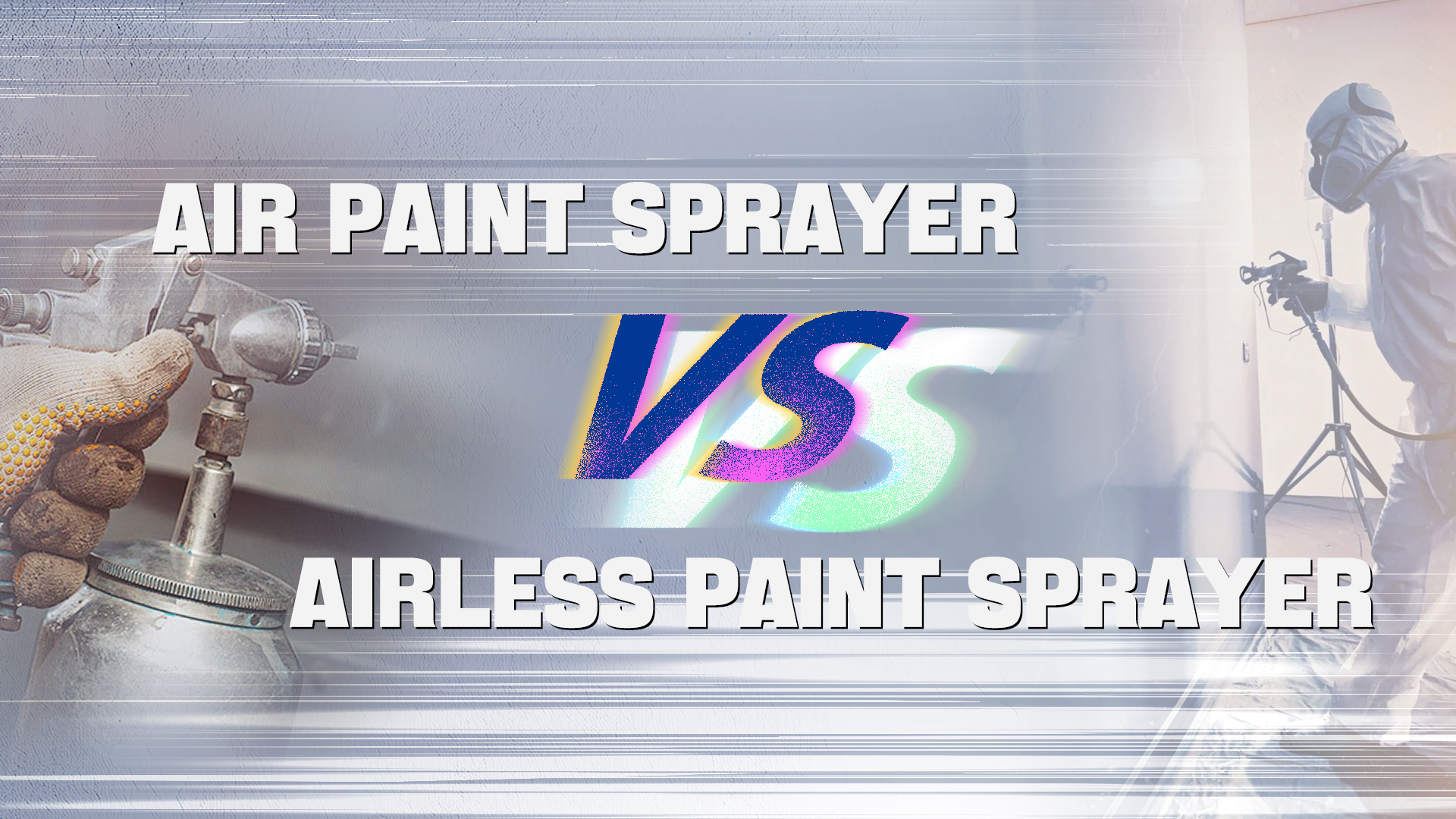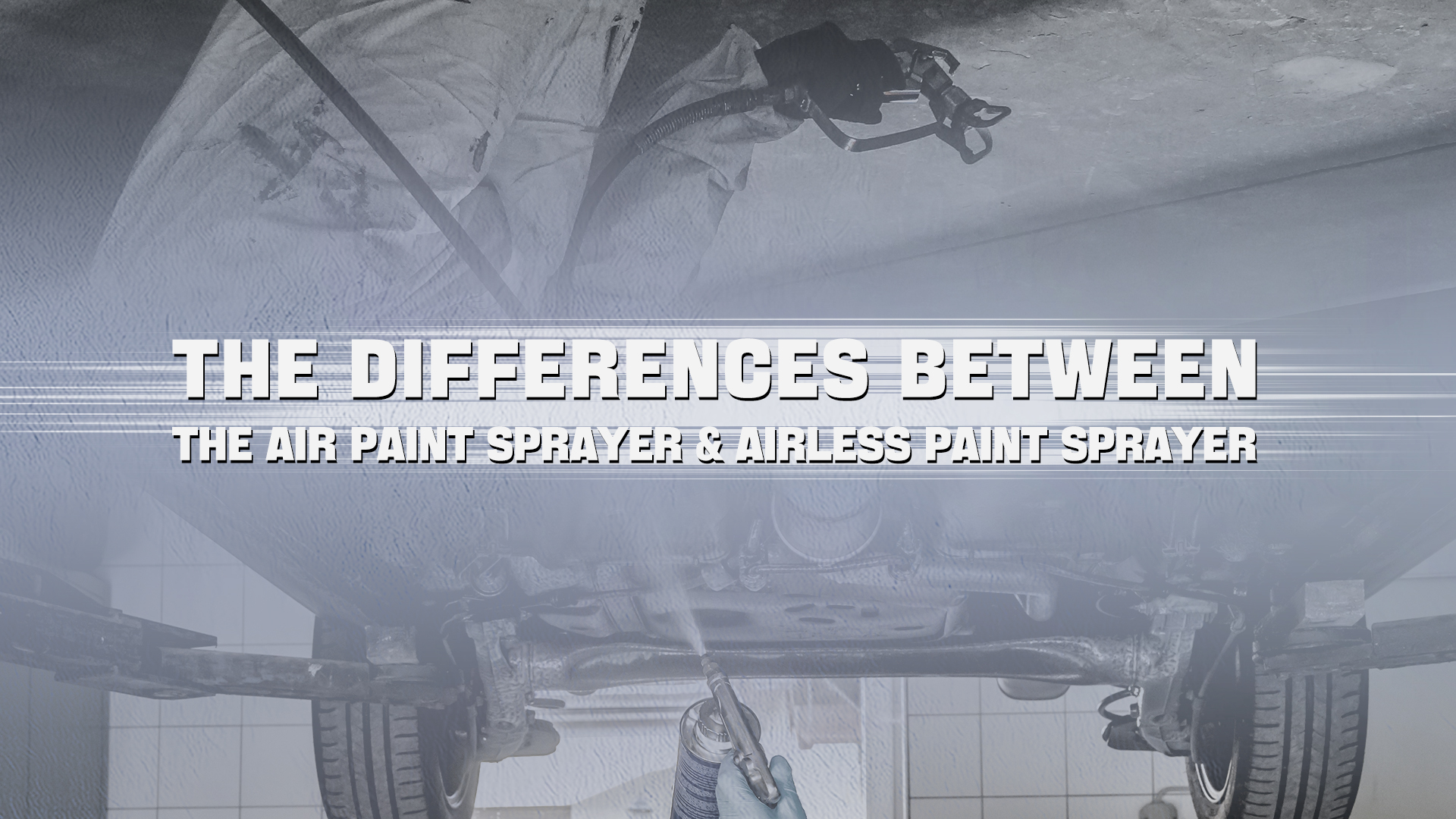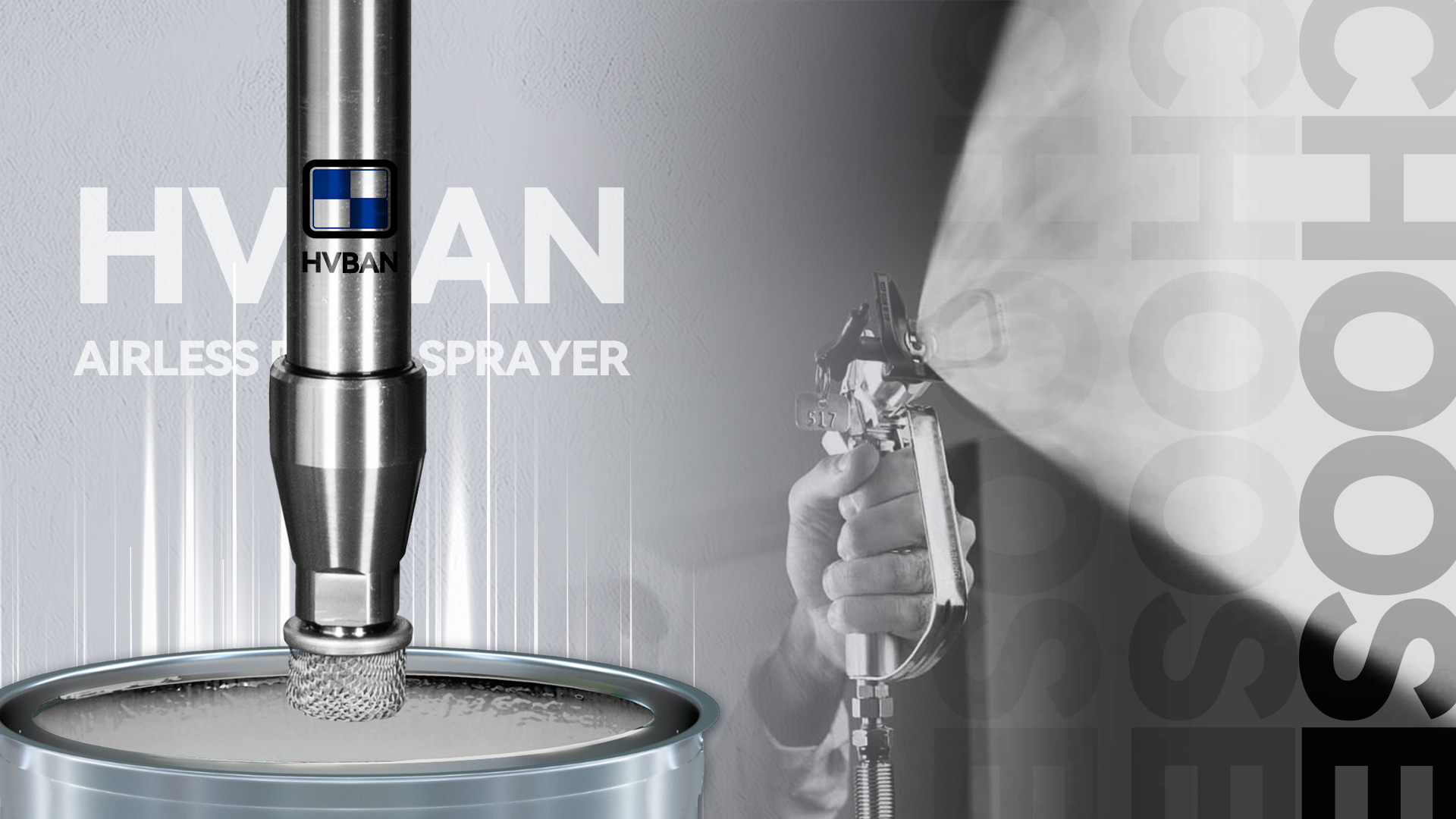Choosing the right paint sprayer for your project can significantly impact both the quality and efficiency of the job. Whether you are a professional contractor tackling a commercial property or a DIY enthusiast working on a home improvement project, understanding the key differences between air paint sprayers and airless paint sprayers is essential. In this article, we will compare these two popular types of sprayers—exploring their unique advantages and applications—to help you determine which is the best airless paint sprayer for your needs.
What is an Air Paint Sprayer?
An air paint sprayer is a tool that uses compressed air to apply paint to a surface, producing a smooth, even finish. It is commonly used for projects like painting furniture, cabinets, or other detailed work where precision is important.
How Does an Air Paint Sprayer Work?
Air paint sprayers use compressed air to push paint through a nozzle. This airflow atomizes the paint into fine droplets, creating a smooth, even spray pattern on the surface. The design of the sprayer allows for precise control over the spray pattern and paint flow, giving users the flexibility to achieve different textures and finishes based on their specific needs.
What is an Airless Paint Sprayer?
An airless paint sprayer uses high-pressure fluid to atomize the paint and deliver it onto a surface. This method is ideal for covering large areas quickly, such as walls, ceilings, fences, and industrial coatings. Airless sprayers are capable of handling thicker paints, making them versatile for a variety of projects, including both interior and exterior surfaces.
How Does an Airless Paint Sprayer Work?
Airless sprayers use a high-pressure pump to pressurize the paint. When the pressurized fluid exits through the spray nozzle, it atomizes into fine droplets. The high velocity of the fluid causes the paint to break into tiny droplets upon contact with the air, creating a fine mist that covers the surface evenly. This ensures an even and consistent coat, making airless sprayers ideal for efficient coverage, especially on larger areas. Their ability to apply thick coats quickly makes them perfect for commercial and industrial projects, where speed and efficiency are essential.
Air Paint Sprayer vs Airless Paint Sprayer: What Are Their Differences?
Both air paint sprayers and airless paint sprayers are effective tools, but each has unique features that make them suited for different applications.
1. Application: Air vs Airless Paint Sprayer
- Air Paint Sprayer: Ideal for detailed, small-scale projects. It uses low-pressure air to atomize the paint, leading to slower spraying speed. As a result, it is better suited for small surfaces or localized touch-ups that require a high-quality finish, rather than for large, continuous applications.
- Airless Paint Sprayer: Perfect for high-efficiency, large-area painting. The high-pressure system allows the sprayer to cover expansive surfaces quickly and consistently, making it a preferred option for professionals managing time-sensitive or large-scale projects.
2. Versatility: Air vs Airless Paint Sprayer
- Air Paint Sprayer: Typically used with low-viscosity coatings. While it delivers a smooth and even finish, it often requires thinning when dealing with thicker paints or primers, limiting its flexibility.
- Airless Paint Sprayer: Handles a wide range of paint viscosities, including thick coatings and heavy-duty primers. Its robust versatility makes it suitable for everything from residential exteriors to industrial infrastructure, meeting both light-duty and heavy-duty spraying demands.
3. Efficiency:Air vs Airless Paint Sprayer
- Air Paint Sprayer: Provides a spraying efficiency of around 200—300㎡/h, making it suitable for small-scale projects with lower productivity demands. However, on larger surfaces, the need for frequent refilling and limited spraying speed significantly reduce overall efficiency.
- Airless Paint Sprayer: Capable of delivering 400—500㎡/h. Its continuous paint flow reduces interruptions, significantly increasing productivity—especially beneficial for large projects with tight deadlines.
Air Paint Sprayer vs Airless Paint Sprayer: Which One to Choose?
When choosing between an air paint sprayer and an airless paint sprayer, consider factors like project size, speed, and material type. Below, we outline the key differences, pros, and cons of each to help you decide.
Air Paint Sprayer:
Pros:
Refined Finish: Offers excellent control over spray pattern and texture. Ideal for tasks requiring smooth, even finishes or intricate detailing.
Precision Control: Powered by compressed air, it allows accurate adjustments to paint flow and spray pattern, making it suitable for delicate surfaces.
Perfect for Small Jobs: Particularly well-suited for compact areas or precision work, such as furniture, trim, or cabinetry.
Cons:
Limited Versatility: While suitable for low-viscosity coatings, air sprayers often struggle with thicker paints or primers, which usually need to be thinned—potentially compromising the finish quality.
Weaker Adhesion: Air turbulence and bounce-back can prevent paint from penetrating surface pores, leading to lower bonding strength.
Shorter Coating Lifespan: Compressed air may contain moisture, which can compromise coating integrity and durability.
Low Transfer Efficiency: Coatings are typically thin and require multiple passes to achieve the desired thickness. Additionally, air atomization causes significant overspray, leading to lower paint utilization.
Lower Productivity: Relies on external compressors, limiting mobility. Slower spray speed and smaller coverage make it inefficient for large jobs.
Messier Work Environment: Paint mist disperses widely, leading to higher environmental contamination and less comfortable working conditions.
Airless Paint Sprayer:
Pros:
Excellent Versatility: Suitable for all types of coatings, including high-viscosity paints and heavy primers.
High Transfer Efficiency: Airless sprayers deliver more paint directly to the surface with minimal waste, making them ideal for high-efficiency, large-scale projects. They allow precise control over coating thickness, achieving up to 30 microns in a single pass and maximizing material utilization.
Smooth and Consistent Finish: Produces dense, uniform layers with strong color consistency across large surfaces.
Strong Adhesion: Paint is forced into surface crevices, forming a tighter mechanical bond with the substrate.
Durable Coating: Maximizes the performance of high-resin paints, resulting in longer-lasting, more abrasion-resistant finishes.
High Work Efficiency: Portable and easy to clean, airless sprayers offer fast coverage, making them ideal for large-scale, demanding jobs like exteriors and commercial buildings. They are particularly effective when painting walls with airless sprayers.
Cleaner Job Site: The spray pattern is more concentrated, and scattering is reduced, resulting in a relatively cleaner working environment.
Cons:
Higher Learning Curve: Requires more practice to master. Inexperienced users may need time to achieve optimal results.
Less Precision: While ideal for larger surfaces, airless sprayers do not offer the same level of fine control as air sprayers, making them less suitable for intricate or detailed work.
Why Choose HVBAN Airless Paint Sprayers?
When considering a paint sprayer for large-scale commercial or industrial projects, the HVBAN airless paint sprayer stands out due to its unparalleled efficiency, versatility, and reliability.
Why HVBAN?
High Performance: HVBAN airless sprayers are engineered for demanding tasks. The high-pressure, high-speed application allows you to cover large areas quickly, without compromising the quality of the finish.
Durability: Built with high-quality materials, HVBAN commercial airless sprayers are designed for heavy-duty use, ensuring they can withstand the demands of both commercial and industrial environments.
Reduced Costs: While HVBAN airless sprayers may have a higher initial cost, their superior efficiency and faster application reduce labor and material costs over time, leading to significant savings on long-term projects.
No matter the scale or complexity of your project, HVBAN airless sprayers are built to ensure reliable performance, providing fast, efficient, and high-quality coverage.
Conclusion
In conclusion, when comparing air paint sprayer vs airless paint sprayer, the right choice ultimately depends on your specific needs. If you’re working on a small-scale project that requires precision, an air sprayer may be the right choice. However, for larger projects where speed, efficiency, and versatility are key, an airless sprayer is the clear winner.
Why not choose the best airless paint sprayer and enjoy the best of both worlds? HVBAN airless paint sprayers combine all the benefits of high-speed coverage, precise control, and durable performance. No matter the size or complexity of your project, HVBAN airless paint sprayers are the ideal tool to help you achieve superior results with ease.
Contact us today to learn about distributor pricing, samples, and exclusive partnership opportunities.
Post time: Jun-04-2025



